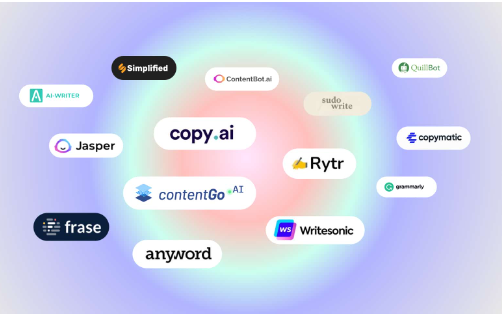Introduction: The Modern Writer’s Dilemma
Writer’s block is one of the most frustrating barriers to productivity for content creators, authors, copywriters, and even students. It often stems from mental fatigue, emotional pressure, or the simple fear of imperfection. The struggle to conjure ideas, structure coherent thoughts, and meet deadlines can become overwhelming.
Meanwhile, artificial intelligence is rapidly emerging as a reliable creative partner. AI doesn’t suffer from anxiety, creative doubt, or procrastination. It is always ready to help generate, organize, and optimize content—providing a stark contrast to the human condition. The digital age introduces a compelling question: Can AI finally liberate us from the limitations of writer’s block?

Understanding Writer’s Block: A Human Phenomenon
Writer’s block is more than a productivity hiccup; it is a psychological state influenced by emotions, mental exhaustion, and external pressures. Causes range from perfectionism and fear of criticism to burnout and lack of inspiration. It can manifest in any writing field—from blogging and screenwriting to journalism and academic work.
For many, this block leads to missed deadlines, decreased confidence, and prolonged creative droughts. The act of writing becomes burdensome instead of enjoyable. Unlike machines, humans operate with complex emotional frameworks, making consistency in creative output a constant challenge.

AI Writing Tools: A New Creative Paradigm
AI writing platforms like ChatGPT, Jasper, and Copy.ai are transforming how content is created. These tools are built on natural language processing models trained with massive datasets, enabling them to generate text that mimics human style and coherence.
What makes AI immune to writer’s block is its lack of emotional dependencies. It does not fear judgment or second-guess itself. It writes what it is instructed to, without the baggage of overthinking or the paralysis of perfectionism. This opens the door for writers to collaborate with a tool that can jumpstart the creative process at any time.

Speed and Consistency: The AI Advantage
Unlike humans who require rest, inspiration, and emotional stability, AI operates around the clock. It can produce structured, grammatically accurate, and tonally consistent content in seconds. Whether it’s drafting an article, generating product descriptions, or writing email campaigns, AI significantly reduces turnaround time.
For example, marketers using AI tools report a 40-60% increase in content output, allowing them to meet demanding content calendars without sacrificing quality. The ability to maintain brand voice and message across high volumes of content makes AI a strategic asset for productivity.

Collaborative Creativity: Man Plus Machine
AI is not here to replace writers—it’s here to assist them. Many professionals now use AI to brainstorm ideas, generate outlines, and rephrase content. This partnership allows writers to focus on creativity and emotional storytelling, while AI handles structure, language consistency, and research suggestions.
Case studies show that teams using AI experience fewer delays and more productive writing sessions. Writers report that AI breaks the inertia of starting, freeing them to concentrate on higher-level thinking and refinement.

Customization and Learning: AI that Grows With You
Advanced AI writing tools can adapt to a user’s preferences over time. By analyzing prompts and feedback, these systems begin to understand tone, style, and formatting choices. The result is a tool that evolves with your unique writing voice.
Customization features, such as tone settings, brand style guides, and vocabulary preferences, make AI feel more like a personal assistant than a generic generator. Over time, this leads to more relevant and on-brand content that reflects the user’s individuality.
Overcoming Creative Burnout with AI
Creative burnout is common among professionals who rely on consistent ideation and output. When deadlines pile up and inspiration wanes, productivity suffers. AI helps mitigate this by supporting brainstorming, automating repetitive writing tasks, and offering immediate feedback or suggestions.
For example, novelists use AI to outline plot arcs or develop character backstories. Marketers use it for campaign ideation. Academics use it for structuring research papers. In every case, AI reduces pressure and provides mental breathing room.
AI vs. Human Emotion: Where Lines Are Drawn
Despite its capabilities, AI lacks emotional depth, intuition, and the ability to experience lived realities. It doesn’t understand grief, joy, or the subtleties of cultural nuance the way humans do. While it can mimic tone and sentiment, it cannot truly feel.
This limitation means AI-generated content often lacks soul, empathy, or authentic voice—qualities that are critical in journalism, literature, and personal storytelling. Writers must remember that AI is a tool, not a creator of human connection.
Ethical and Authenticity Concerns
With great power comes great responsibility. AI-generated content raises ethical concerns regarding plagiarism, originality, and disclosure. Without human oversight, there’s a risk of output that recycles content too closely or introduces misinformation.
Writers must ensure that their use of AI is transparent and ethical. This includes running content through plagiarism detectors, maintaining editorial control, and openly acknowledging AI assistance when relevant. Authenticity can still thrive with AI—when used responsibly.
The Future of Writing: Hybrid Authorship
The concept of hybrid authorship—a collaboration between human creativity and machine efficiency—is becoming the norm. Writers now blend their emotional insight with AI’s structured thinking to produce rich, engaging content faster than ever.
Educational institutions are beginning to include AI literacy in writing programs, preparing students to use these tools effectively and ethically. The role of the writer is evolving—not fading—with AI as a creative extension of the human mind.

Tools and Techniques: How to Start Using AI Today
If you’re new to AI writing, start with platforms like ChatGPT for idea generation, Jasper for marketing content, or Copy.ai for social media posts. Set clear goals, write detailed prompts, and always revise the content before publishing.
Tips for success include:
- Start small with idea prompts or outlines.
- Use AI as a draft generator, not a final editor.
- Focus on editing and injecting personality.
- Don’t rely solely on AI for emotionally-driven writing.
Avoid pitfalls such as using generic outputs or publishing without review. With practice, integrating AI into your workflow becomes seamless and effective.
Success Stories: Real-World Use Cases
Businesses and creators are already seeing significant benefits from AI writing. E-commerce brands use it to write thousands of product descriptions. Bloggers use it to scale up SEO content. Authors use it to defeat writer’s block and meet publishing deadlines.
For instance, a digital marketing agency increased their client content production by 70% using AI tools. Freelancers report higher earnings due to increased capacity. These success stories underscore AI’s potential to enhance—not replace—human creativity.
The Psychology of Letting Go: Trusting AI as a Co-Writer
Letting go of total creative control can be uncomfortable. Writers may feel guilt, skepticism, or fear of becoming obsolete. However, the key is to view AI as an ally, not a threat. It does not aim to take your place but to enhance your process.
By embracing AI as a co-writer, you shift from the pressure of creating from scratch to the role of editor, curator, and visionary. This reframing allows you to focus on storytelling, strategy, and voice—while AI handles the groundwork.
Conclusion: Writing in the Age of AI
We are entering a new era where creativity is no longer hindered by fatigue or fear of the blank page. AI, a tool that never sleeps, never doubts, and never procrastinates, stands ready to assist. By harnessing its strengths and respecting its limitations, writers can produce better content, faster—and with renewed passion.
Writer’s block may never fully disappear, but it no longer has to be an insurmountable obstacle. With AI as your tireless co-writer, the path to productivity, creativity, and innovation is wide open.

